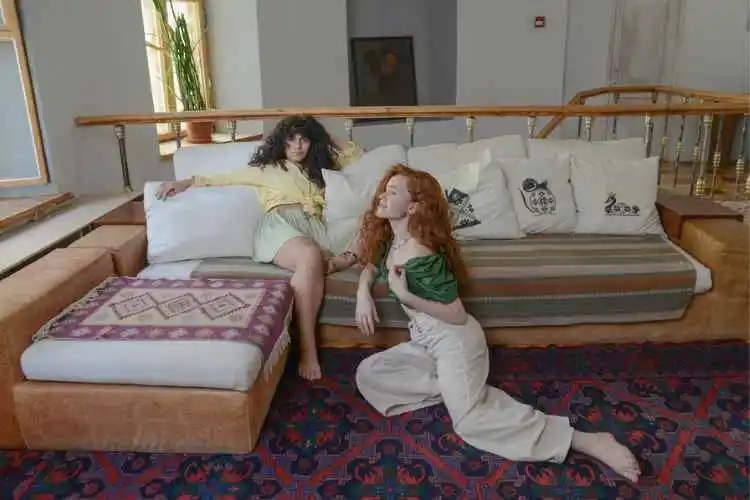There is a space in the home for the artistic use of sofas and daybeds. This often involves a departure from conventional designs, exploring innovative concepts that blend functionality with tasteful expression.
One approach is the incorporation of modular elements that allow users to customize the configuration of their seating. These modular sofas can be rearranged into various shapes and sizes, providing flexibility to adapt to different spatial layouts and user preferences.
Smart technology and sustainability
You can also integrate smart technology into sofas and daybeds by ferm LIVING. Imagine sofas with built-in wireless charging pads, adjustable LED lighting, or even embedded speakers. These technologically enhanced pieces go beyond traditional furniture, catering to the needs of a modern lifestyle while seamlessly blending with the living space. Such innovations redefine the role of sofas and daybeds, turning them into multifunctional hubs for relaxation, entertainment, and connectivity.
In terms of aesthetics, unconventional materials and artistic designs can elevate the design appeal of sofas and daybeds. Consider furniture crafted from sustainable materials like bamboo or recycled metals, not only for their eco-friendly qualities but also for the unique textures and patterns they bring. Designs inspired by nature, such as fluid and organic shapes resembling plant forms or natural landscapes, can create a visually striking and harmonious presence in the living space.
In terms of sustainability, exploring eco-friendly materials and manufacturing processes is a rising trend. Sofas and daybeds made from recycled or upcycled materials, or those designed for easy disassembly and recycling, contribute to a circular economy and reduce environmental impact. These innovative approaches align with the growing awareness of sustainable practices in furniture design, appealing to environmentally conscious consumers.
Conclusion
By pushing the boundaries of traditional design, these pieces become more than just furniture; they transform into statements of individuality, innovation, and a forward-thinking approach to modern living.


